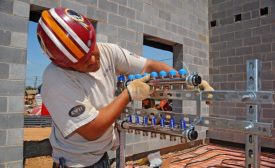Radiant/Hydronics
CASE STUDY
Hydronic retrofit brings utility and style together
Viega products aid in residential domestic water supply and heating system renovation.
April 22, 2022
The gold standard: Protection from dissolved oxygen and debris in hydronic systems
Keeping hydronic systems healthy.
March 21, 2022
CASE STUDY
Circulator pump reliability in extreme conditions
Renovation reduces energy consumption for military base housing.
December 16, 2021
Trend watch
Hydronic contractors becoming control consultants
Connected customers provide long-term partnerships for contractors.
November 19, 2021
John Siegenthaler: Game changer
Heat pumps and chilled water cooling will change the future of hydronics.
September 29, 2021
The real value of snow-melt systems
Why you should add snow- and ice-melt systems to your projects
September 15, 2021
Hydronics Workshop
John Siegenthaler: What I look for
A 'dirty dozen' things that point to trouble ahead.
July 29, 2021
Higher turndown ratios, parallel cascading are keys to efficiency
Packaged boilers installed in multiple boiler cascade systems offer long-term energy savings and reliability.
July 19, 2021
Keep your content unclogged with our newsletters!
Stay in the know on the latest plumbing & piping industry trends.
JOIN TODAY!Copyright ©2024. All Rights Reserved BNP Media.
Design, CMS, Hosting & Web Development :: ePublishing












